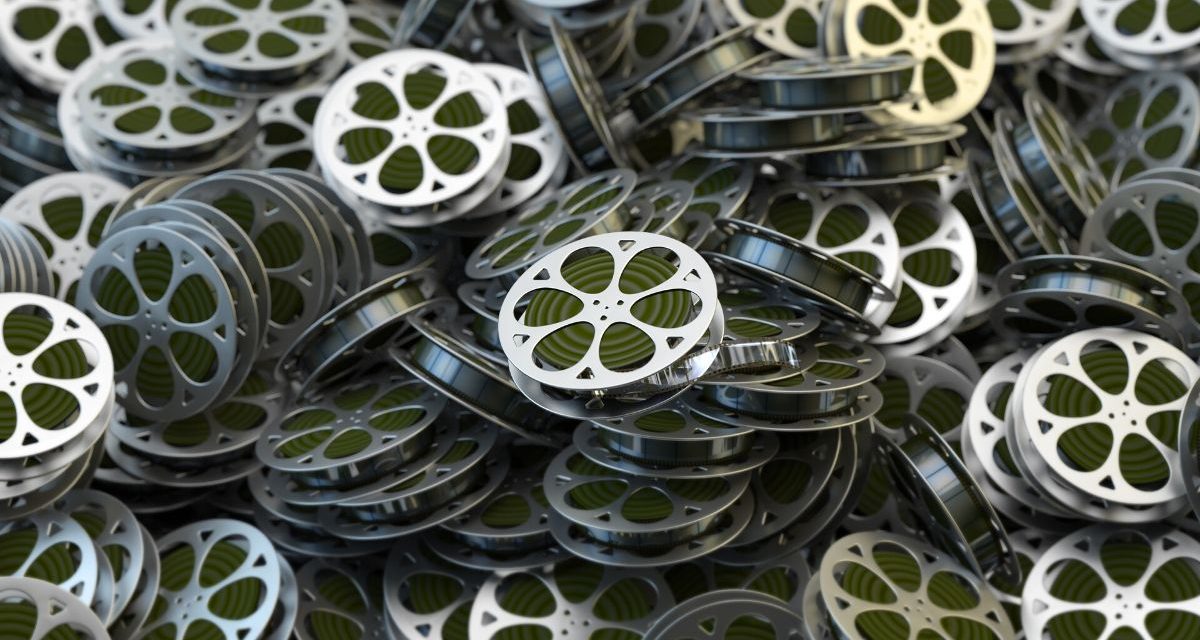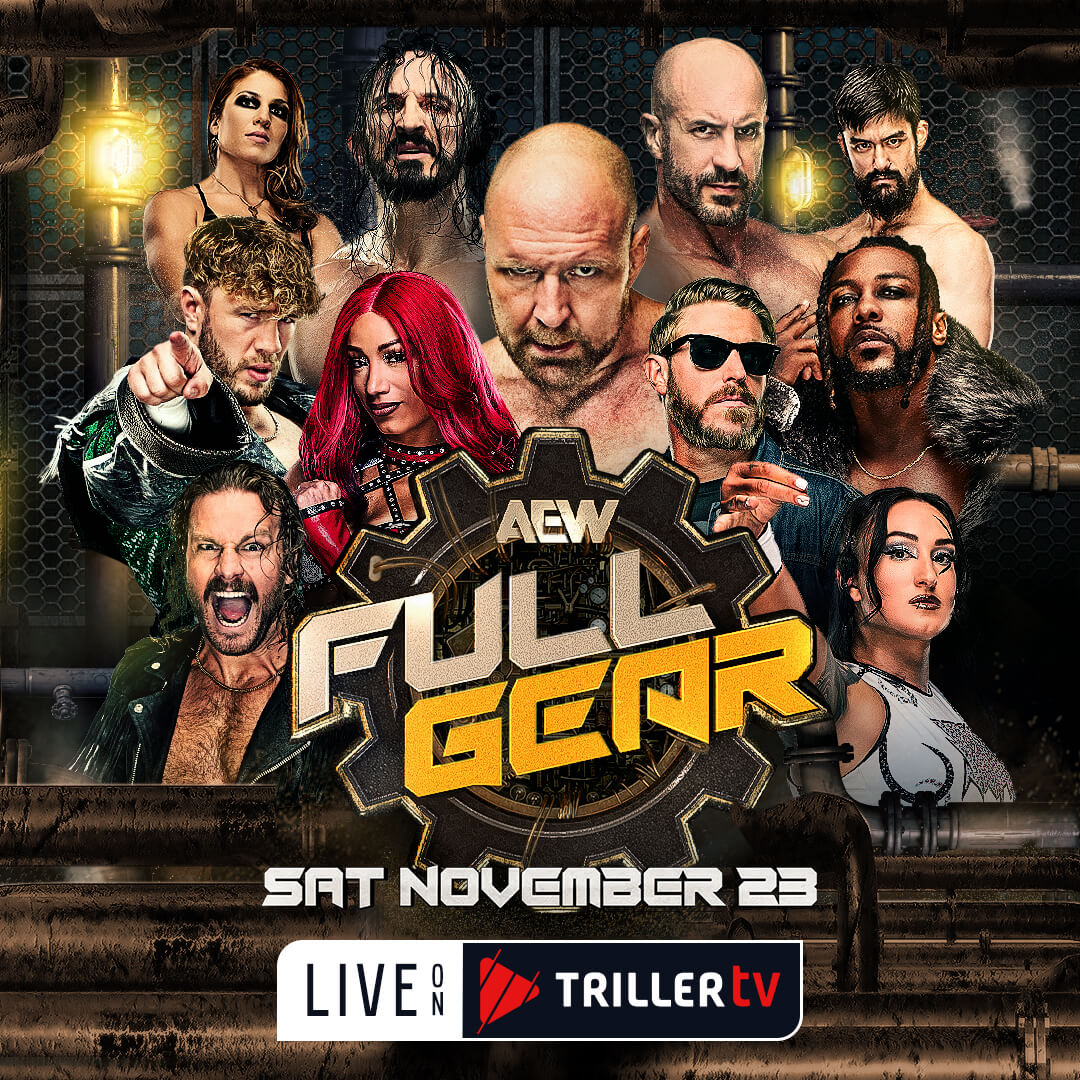“Wrestling is made to weed out the weak and the people that don’t belong.” — Scotty Mac, This Wrestling Life
Ever notice that whenever you go to an independent wrestling show, there’s always someone around with a video camera recording everything? And why wouldn’t there be, really, considering the carnival freak show that is wrestling? A wrestling show brings together freaks of all ages and creeds, all with different ambitions and agendas. In the feature-length documentary This Wrestling Life, the camera is pointed at four such freaks: a wrestler running out of time to make into the big leagues; a young kid determined to follow in his hero’s footsteps; a young woman grappling with learning the ropes and her own personal limitations and a gay man trying to make it as a referee.
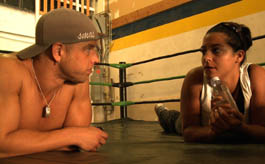
Scotty Mac and Miss Natalie.
The documentary, directed by Stephen Gillis, a self-taught filmmaker, does something few documentaries of its ilk do: tell the stories of a handful of regular people as they make their way through the insane world of professional wrestling. There is no main storyline in the film, only an overarching theme about the perils and pitfalls of pro wrestling as seen through the eyes of ordinary people with ordinary problems.
The director picked the four subjects for his film carefully. A fan of wrestling for most of his life, Gillis was always fascinated with the characters of the sport and the storytelling they did in the ring. While spending some time recovering from Crohn’s disease, he had the chance to re-watch epic storylines from the classic era of wrestling (i.e. the destruction the Mega Powers) and began to think about putting his skills to work to make a film about the sport he loves.
“I started coming up with ideas for a documentary on wrestling,” Gillis explained. “I met a producer who didn’t like any of the angles I had at first so I threw out the idea of following an independent wrestling promotion for awhile and a year later, we were going into production.”
Gillis focused on the premier independent wrestling promotion in the Vancouver area, Extreme Canadian Championship Wrestling. The first person he wanted to focus on was its main performer, the enigmatic and well-known Scotty Mac. Scotty was approaching 30 and had wrestled for many years but despite all his skills, had yet to make it to the big dance and Gillis wanted to capture the struggle Scotty endured as he began to wonder if he was ever destined to be anything other than an independent attraction. It was a compelling idea but the angle was soon altered.
“On our first day of shooting, there was changing of the guard,” Gillis recalled. Dave Republic, the owner of ECCW who had led the company for many years, sold the company and Scotty Mac took over as the promotion’s driving force, also replacing (then ECCW-wrestler) Disco Fury as lead booker. “So they were supposed to work together but had a Shawn/Bret thing going on. They did not like each other and I thought this could be a great storyline in the film, but within a couple of weeks, Disco left the company and never really liked us filming him.”
That’s when Gillis met Travis, a young man who aspired to be just like Scotty Mac. Travis had enrolled in ECCW’s Slam Academy and was working on becoming a wrestler himself. In this, Gillis saw another opportunity.
“Once I found out Travis was joining the school and I learned about his relationship with Scotty, I knew this would be our main story. Then I found Natalie and Bill and realized I had the four greatest people to film. So we did.”
Natalie was Scotty’s roommate and good friend at the time of the filming and their relationship was undergoing considerable strain. Natalie was not as committed as Scotty was to the wrestling business, but to be fair, few people are. Bill was also a student of Slam Academy and has the unique distinction of being openly gay. It’s this storyline that provides some of the more interesting and thought-provoking moments in the film.
Referee training is not something that has ever received an abundance of attention, but This Wrestling Life shines a bit of a spotlight on this overlooked area of pro wrestling. There’s a particularly jarring sequence where Bill endures taunts from other wrestlers and is singled out for being gay. You can see the struggle the young man faces and he talks about it openly during an interview by a local lake. Another sequence showcases a particularly brutal training session where the students are instructed to do 500 squats. Another scene shows Bill enduring painful training that may make the viewer feel more than a little uneasy. These are the film’s shining moments as they bring us a side of wrestling few people ever get the chance to see.
Bill’s homosexuality is the elephant in the room but, oddly, does not receive more than a glancing blow in the movie. It would have been interesting to see the issue explored in more detail, but there is still a lot of stuff happening in this film, so some scenes were likely edited out. Bill’s sexual orientation does come up and is actually used in creating his gimmick. At one point, just before Bill goes out to ref a match, a wrestler encourages him and says, “Just be really gay.”
It’s an interesting social commentary and it’s not the only one in the film. For his part, Travis’ life has not been easy as his father and mother have each been struggling with their own personal demons. These ongoing struggles have quite clearly affected Travis’ home life. At one point in the film, Scotty shows up at his house to take him to training and you can see Travis’ demeanour change and it’s almost as if Scotty is the light at the end of the tunnel for the young man. Wrestling is Travis’ way out.
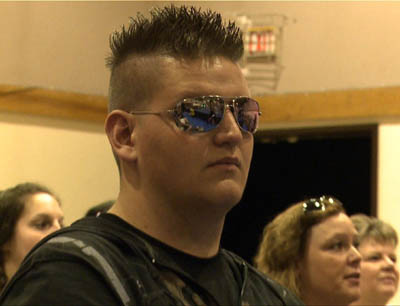
Travis aka Volt Vegas.
Travis, just 18 at the time of filming, was wary of his personal life being put on display for the world to see but his love of wrestling came before his personal concerns. “I knew this was a documentary about wrestling and I wanted my life to be open to the public,” Travis said in an interview. “I wasn’t going to be a closed book and not share my whole story. The viewers wanted to see a story and that’s what I gave them.”
To illustrate this point, Travis brings up a comment his father makes about his mother. “My dad’s comment about my mother was kind of uncalled for, but … I’m proud of her. She’s currently 11 and a half years clean and that is something I can respect. My dad’s part ….well, it worked out. And I showed the feelings that I had way before the movie.”
It’s been Travis’ dream ever since he was six to become a professional wrestler. So it’s a big deal for him to be training at Slam Academy with his hero, Scotty Mac. But some of his naiveté is shown as Travis puts maybe a little too much faith in his wrestling future.
“This whole match can make or break me,” Travis says before his official debut in an ECCW ring. “I’ve been pushing myself to go as far as I can go and here I am today — 18 years old, doing my first student show. From there, it’s Surrey, Vancouver, and then only a few more steps ‘til the big time.”
An interesting statement considering Scotty himself has not taken those “few steps” after more than a decade in this business. Scotty’s own struggles are well-captured in the film as it shows him dealing not only with his own wrestling career but also with the issues he is having with Natalie. Personal details are shared with the viewing audience and at one point, Scotty even breaks down a bit, a total surprise to those who know him well.
“I wouldn’t have done anything differently,” Scotty replied when asked if there is anything he could have changed about his appearance in the documentary. “That’s me. That’s ECCW. That was what happened. This film showed our lives whether the moments were happy, sad, easy or hard. It was a very accurate depiction of a tight-knit independent wrestling company and the people in it. And there are companies like us all over the place so I’m glad Stephen helped us tell the world our story.”
Travis agreed. “I thought the movie was fair to wrestling,” he concurred. “It was great from a viewer’s point of view to see the hard work, dedication and sacrifices we make. The four stories that were in the film were absolutely fantastic and very touching, I thought. We may have broken kayfabe but it was well worth it.”
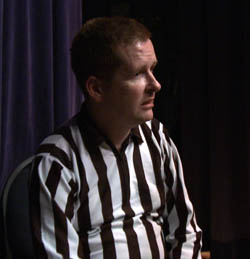
Referee Bill Taylor.
Gillis is proud of his work and the way it has been received thus far. This Wrestling Life has been showcased at a few film festivals and has also been shown on Superchannel, and is being shown there again in the month of January. Looking back and after seeing the final result, Gillis is proud of his film and feels he treated the industry and the people in it fairly.
“I am very proud of the fact that wrestling and non-wrestling fans can sit beside each other and watch something about wrestling and be engaged, laugh and maybe even cry. That was the goal from the outset, to try and bring together both audiences and to showcase an art form I have loved since I was very young age and not in a dark, grimy, scuzzy way. I think this film humanizes the wrestlers more than any other attempt. This is as real as it gets I think.”
The film is real, that point cannot be argued. At times gritty and other times melodramatic, This Wrestling Life shines a light on a world often cloaked in darkness. Where movies like The Wrestler focus on one man’s story, this film showcases the strains and stresses faced by a group of young men and women who are struggling to live a dream. It helps that the movie is professionally produced and edited and contains its own original soundtrack, making it a genuine work on an interesting subject.
The film isn’t likely to change your view on independent wrestling, but that was never its purpose. It’s called This Wrestling Life precisely because it’s not about wrestling, but about the lives of those who choose the sport as their passion, whether in or outside the ring. This said, the film might be a little too narrow in its focus, skipping over some opportunities to show viewers some of the true drama that goes on behind the scenes, but perhaps that is by design. (Scotty Mac’s one and only appearance in a WWE ring could not be shown because of a rights issue, for example.)
In the end, the movie is about people, those crazy freaks who envelop themselves in the carnival known as professional wrestling. As Scotty Mac puts it in the film, “We’re just a bunch of misfits that fit well together.” And in a nutshell, that’s This Wrestling Life.
